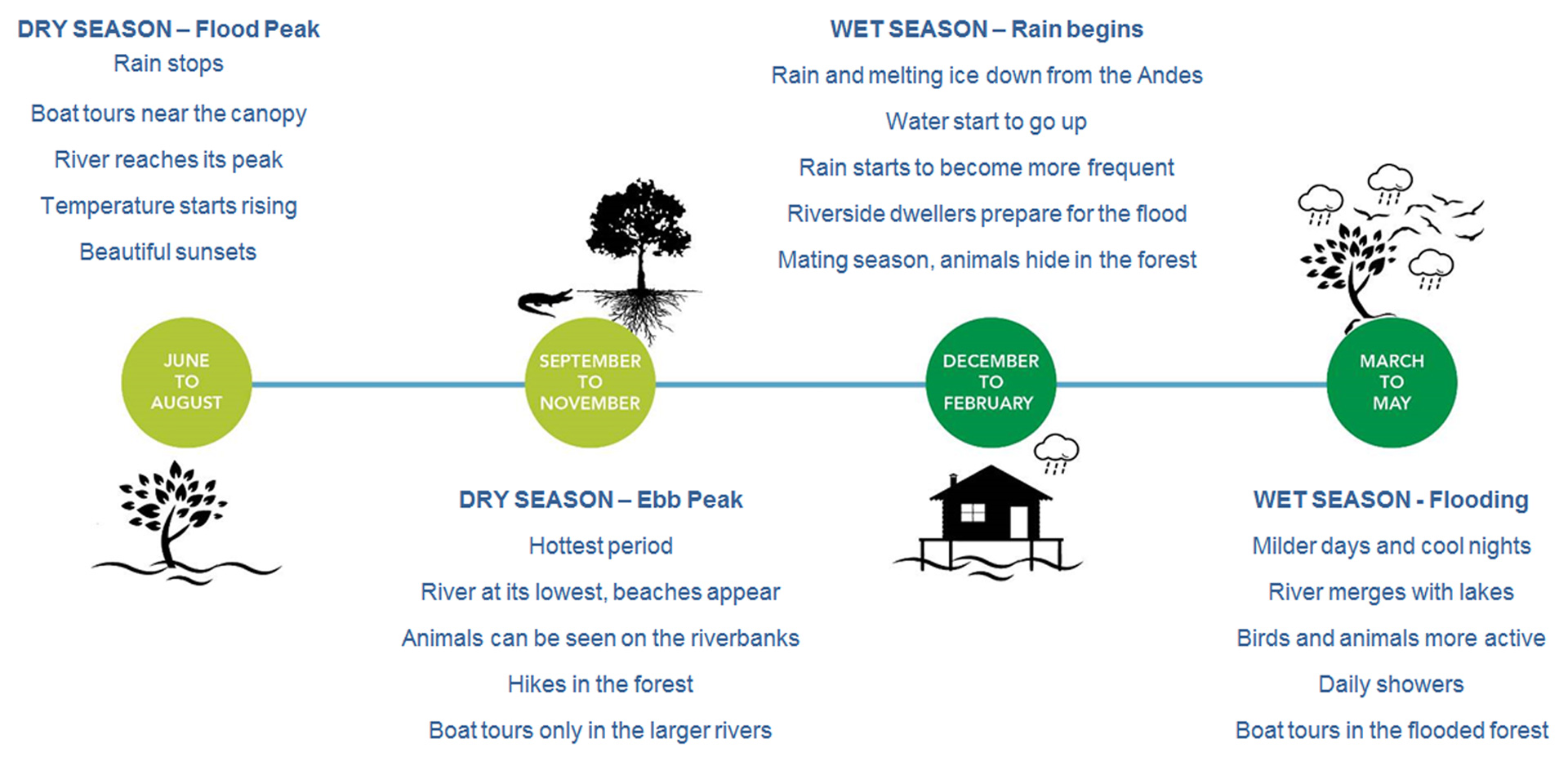When to go?
When to go to the Amazon will depend on what your passenger will want to see. Throughout the year the Amazon landscape changes considerably, due mainly to the influence of rivers and water level, basically varying between two fixed seasons – dry and wet. In that first, the rain is usually occasional, while in the second season, the daily showers keep a high humidity in the air, allowing for a more pleasant climate while the level of the rivers rise gradually. The two periods present surprising landscapes, however, they have their own characteristics:
Wet Season (Rain Begins) – It is Summer in South America. By December, the river is already going up due to melting ice and rain in the Andes. In February, rain starts becoming more frequent in the Amazon. The riverside population prepares for the flood period. The forest is in bloom with new flowers and fruits. It is mating season. Come to see the jungle rejuvenating, the change of the season from dry to wet, and to hear the Amazon come alive with the noise courtship of the animals.
Wet Season (Flooding) – Showers are almost daily, but they come down heavy and quick. Temperature goes down, with cooler nights. The high humidity provides colorful sunsets, and a fog forms on the canopy during sunrise creating an incredible spectacle. The river spills into the lakes and floods the forest. Animals have offsprings and butterflies are seen regularly. This is the time to do boat tours in the flooded forest, for cruises into smaller rivers, when it is milder in the Amazon, and to see animals active after each rain.
Dry Season (Flood Peak) – In June, the river reaches its peak going up 10 to 14 m (32 to 45 ft). Rains becomes sporadic. By August the rivers is going down 30 cm (11 in) per day. Life at the riverside communities is completely transformed. The lakes are full perfect for sunsets reflecting on the flat water. Ideal time for those wanting to experience the tours in the flooded forest with less rain, to meander by canoe tours close to the canopy. To interact with riverside dwellers and learn how they cope with the high water.
Dry Season (Ebb Peak) – The water recedes really fast. Sand beaches start to form on the river banks. It is easier to spot large animals trying to reach the water. Birds feast in the fish stuck in the lagoons. Hikes are possible again. By October, the river is at its lowest, but it is hot once more in South America, the Andes starts to melt. Come to see the more animals on the banks, to observe migrating birds arriving from North America, to enjoy the river beaches and trails in the forest.

